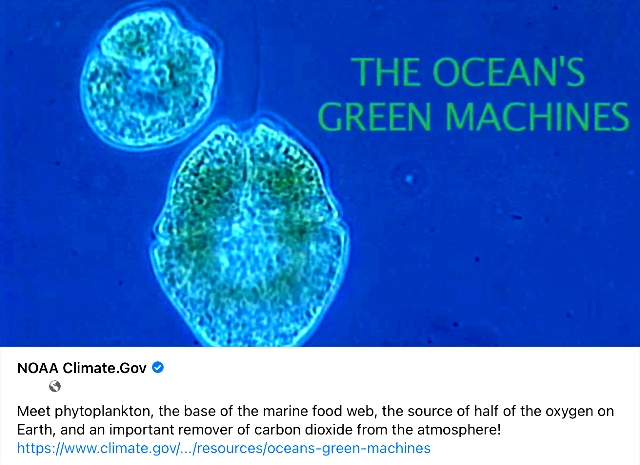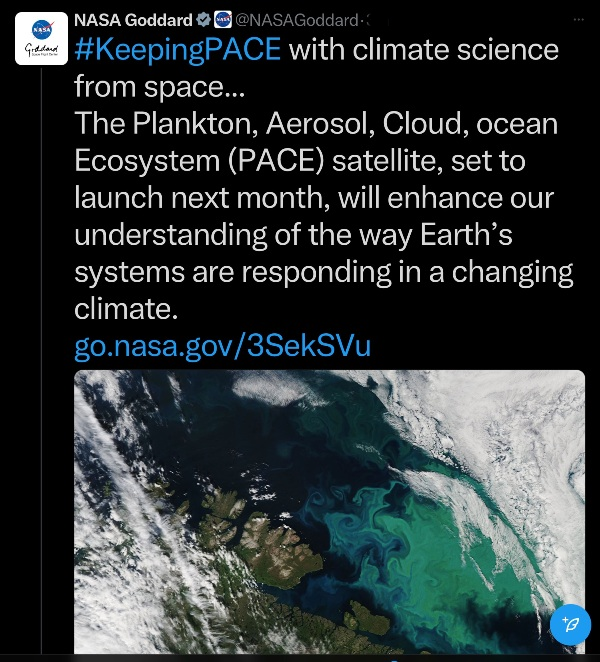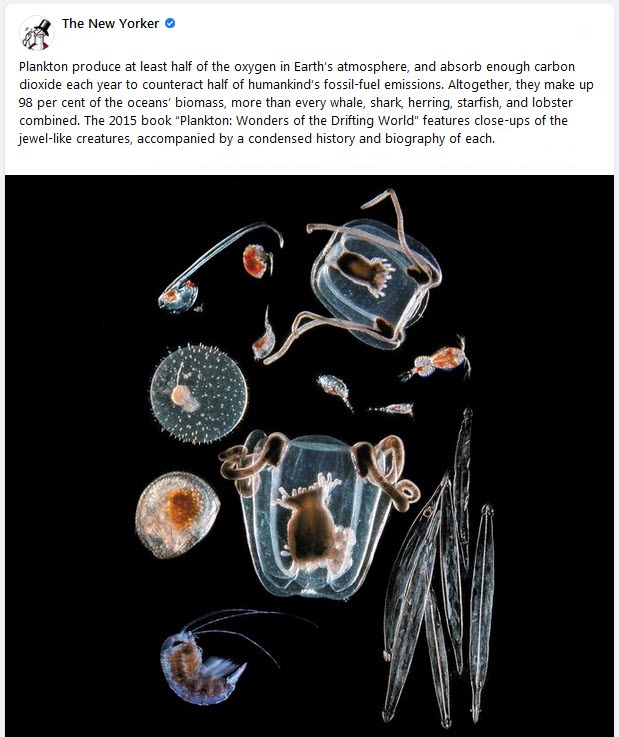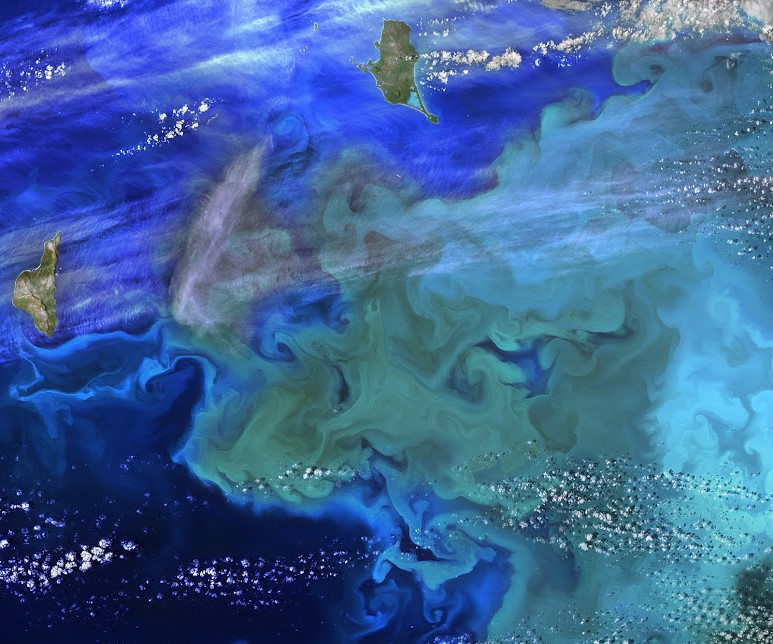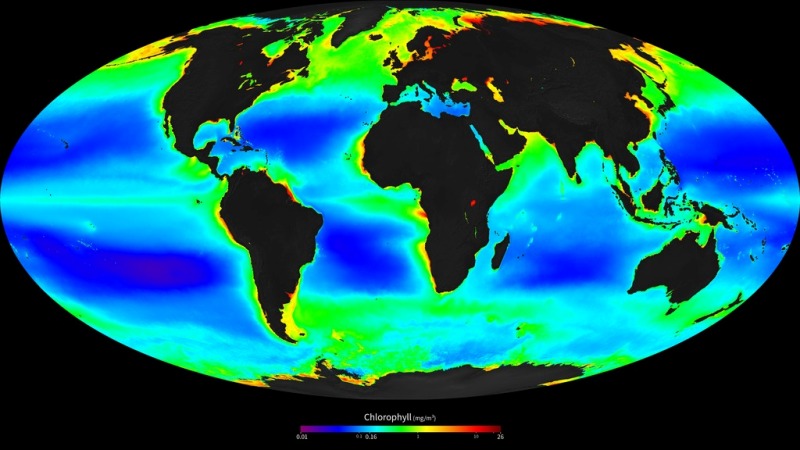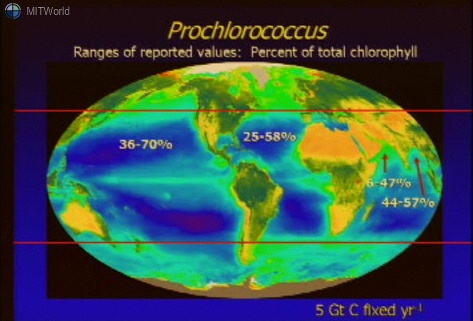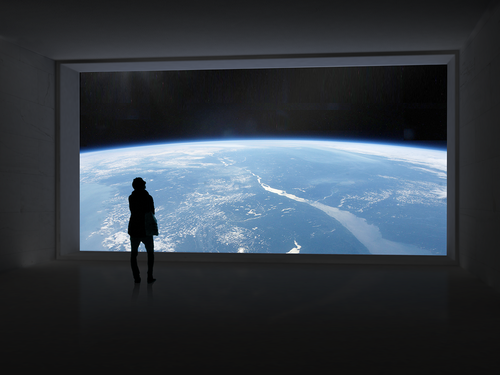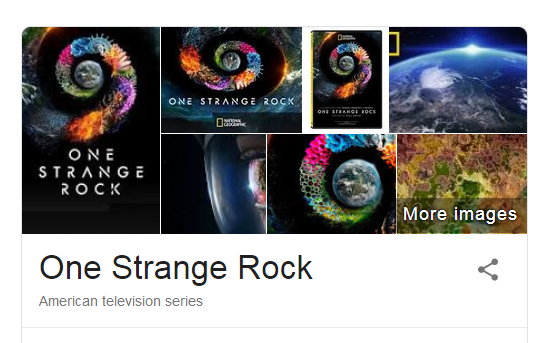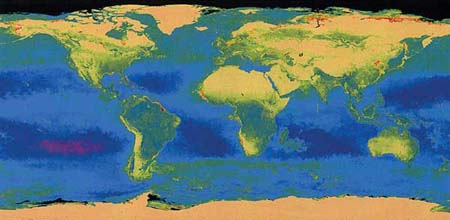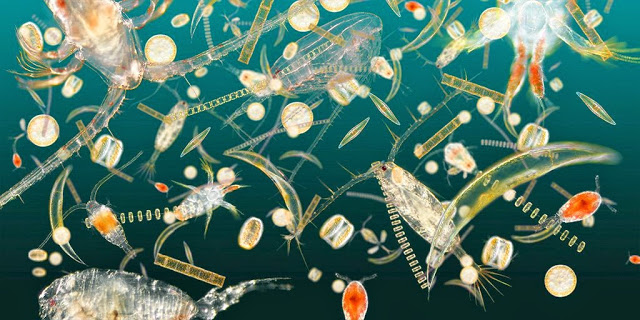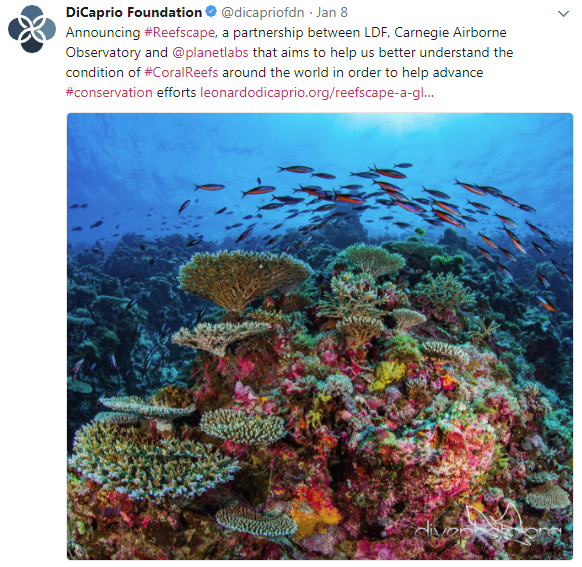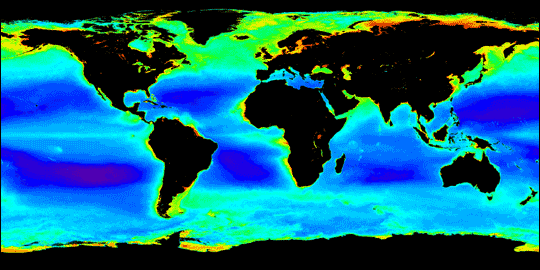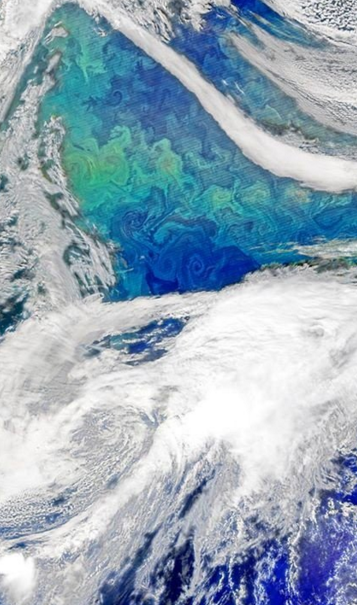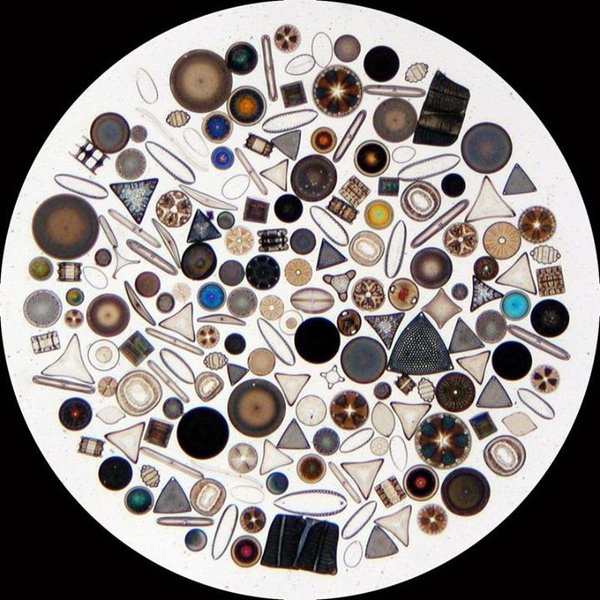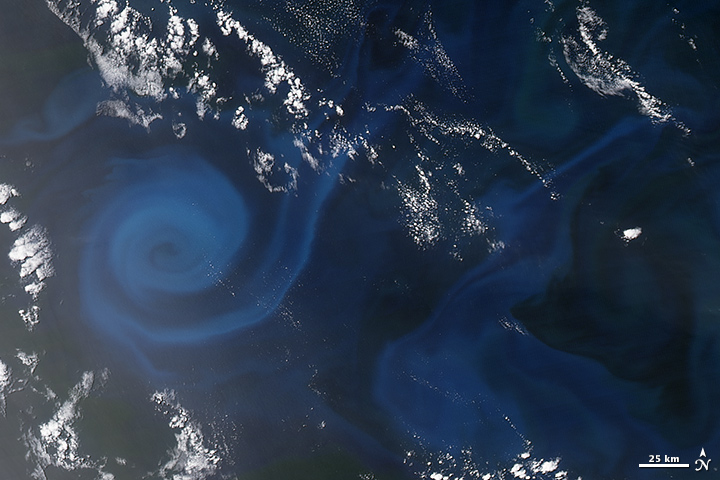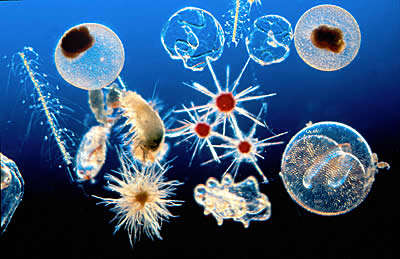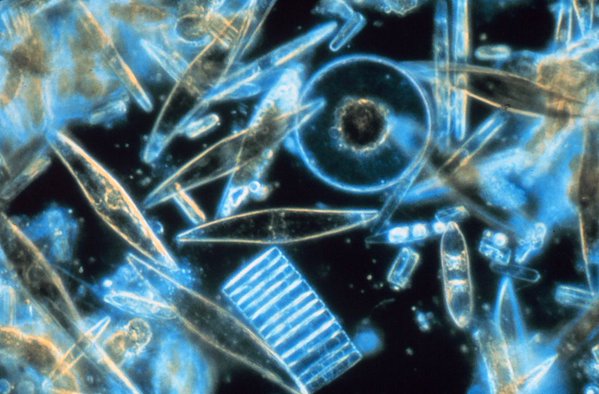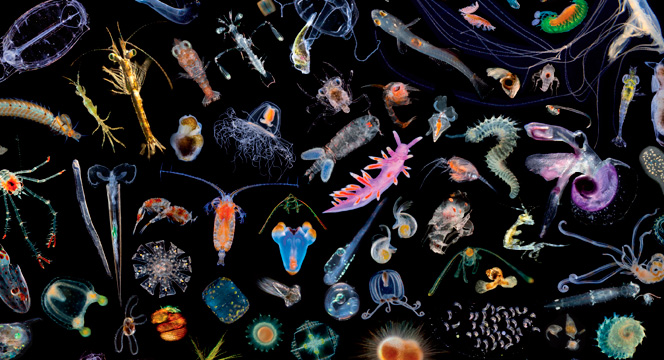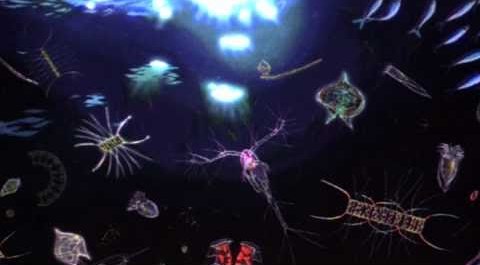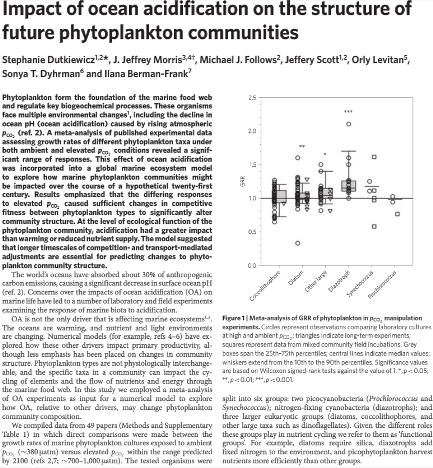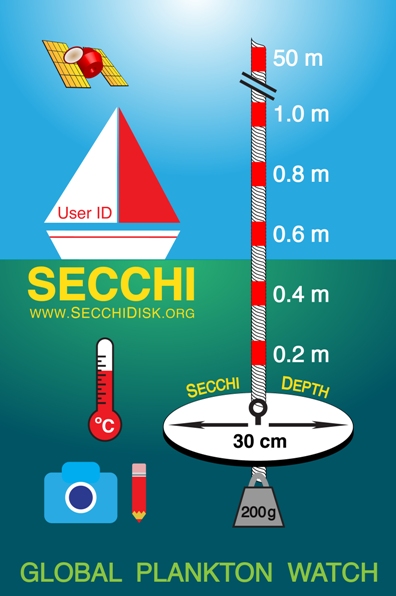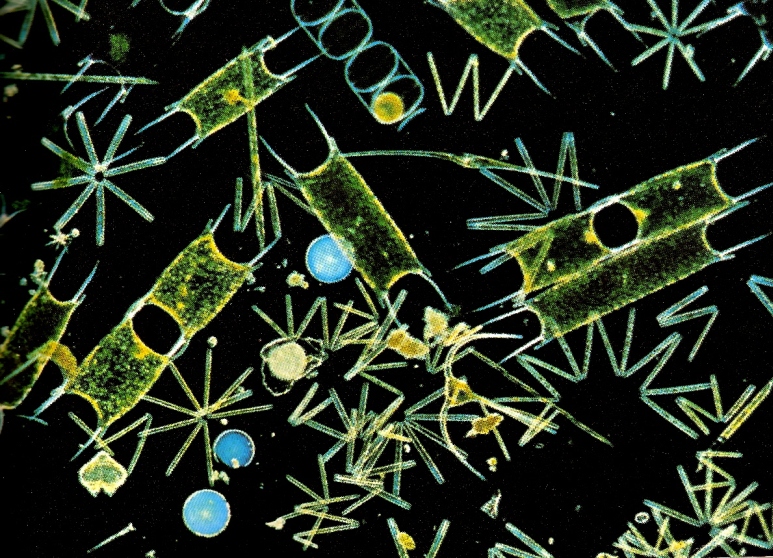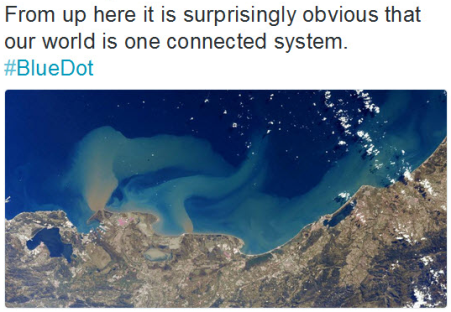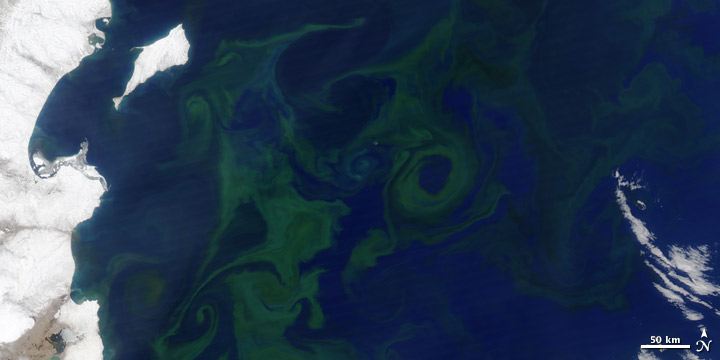TinyBlueGreen: Difference between revisions
Siterunner (talk | contribs) No edit summary |
Siterunner (talk | contribs) No edit summary |
||
| (13 intermediate revisions by the same user not shown) | |||
| Line 1: | Line 1: | ||
: [[File:Phyto the Green Machine.png]] | |||
: <big>"Breathe Deep" and "Thank Phytoplankton"</big> | |||
:* https://twitter.com/NASAEarth/status/1612555085816512512 | |||
:* https://pace.oceansciences.org/ (2023) | |||
::[[File:PACE - NASA Jan 17 2024.png]] | |||
::[[Earth Science Research from Space]] | |||
:: [[File:Plankton story - New Yorker - Oct 2021.jpg]] | |||
:: <small>* https://www.amazon.com/Plankton-Wonders-Drifting-Christian-Sardet/dp/022618871X/</small> | |||
SJS/GreenPolicy360 Siterunner: | SJS/GreenPolicy360 Siterunner: | ||
A tip of our green hat to Planet Citizen, and our Clearwater neighbor, Sylvia Earle: | A tip of our green hat to an amazing [http://www.planetcitizen.org '''Planet Citizen'''], and our Clearwater, Florida neighbor, Sylvia Earle: | ||
| Line 44: | Line 68: | ||
:[https://voices.nationalgeographic.com/2016/11/17/fate-of-small-species-has-huge-implications-for-our-ocean/ <small>''~ The Fate of Small Species and the Oceans by Sylvia Earle''</small>] | :[https://voices.nationalgeographic.com/2016/11/17/fate-of-small-species-has-huge-implications-for-our-ocean/ <small>''~ The Fate of Small Species and the Oceans by Sylvia Earle''</small>] | ||
: [[File:Prochlorococcus featured at GreenPolicy360.png]] | |||
| Line 74: | Line 103: | ||
'''GreenPolicy360 Siterunner''': Follow this [https://time.com/5863821/saving-the-oceans 2020 Time story] to Tasmania, Australia, to the Great Barrier Reef and into the kelp forests. Coral reefs and kelp forests create one of the most diverse biosystems on earth and the need for environmental protection is becoming all too evident. Over the years, the Great Barrier Reef, as with coral reefs and ocean kelp forests around the world, have become devastated by changing ocean temperatures and other human-induced causes. | '''GreenPolicy360 Siterunner''': Follow this [https://time.com/5863821/saving-the-oceans 2020 Time story] to Tasmania, Australia, to the Great Barrier Reef and into the kelp forests. Coral reefs and kelp forests create one of the most diverse biosystems on earth and the need for environmental protection is becoming all too evident. Over the years, the Great Barrier Reef, as with coral reefs and ocean kelp forests around the world, have become devastated by changing ocean temperatures and other human-induced causes. | ||
The kelp, we need to know, are composed of | The kelp, we need to know, are composed of 'tiny blue green' micro-organisms/algae and across the oceans of the world they photosynthesize, creating great amounts of atmospheric oxygen. | ||
Earth system science has begun to monitor these 'forests of the seas' from space to track their health and productivity. This is essential ocean science / atmospheric science / earth science. | Earth system science has begun to monitor these 'forests of the seas' from space to track their health and productivity. This is essential ocean science / atmospheric science / earth science. | ||
| Line 684: | Line 713: | ||
''Like plants and trees on land, phytoplankton give us a lot more than food. It is estimated that '''50 to 80 percent of the oxygen in our atmosphere''' has been produced by phytoplankton. At the same time, they are responsible for drawing down significant portions of the carbon dioxide from the air. The tiniest of living organisms exert an outsized influence on the planet.'' | ''Like plants and trees on land, phytoplankton give us a lot more than food. It is estimated that '''50 to 80 percent of the oxygen in our atmosphere''' has been produced by phytoplankton. At the same time, they are responsible for drawing down significant portions of the carbon dioxide from the air. The tiniest of living organisms exert an outsized influence on the planet.'' | ||
○ | ○ | ||
<big><big>'''''Phytoplankton, DMS, Clouds and Climate'''''</big></big> | <big><big>'''''Phytoplankton, DMS, Clouds and Climate'''''</big></big> | ||
| Line 825: | Line 856: | ||
::: | :::<font color=blue>○ ○ ○ ○ ○ ○ ○ ○ ○ ○ ○ ○ ○ ○ ○ ○</font> | ||
Latest revision as of 18:37, 12 February 2024
- "Breathe Deep" and "Thank Phytoplankton"
SJS/GreenPolicy360 Siterunner:
A tip of our green hat to an amazing Planet Citizen, and our Clearwater, Florida neighbor, Sylvia Earle:
"How Our Fate and the Ocean’s Are One"
- "I see things that others do not..."
Why Saving the Oceans Is as Vital as Protecting Rain Forests --- https://nyti.ms/2W5OgyF
You have talked a lot about how the oceans are crucial in the fight against climate change. How so?
Ayana Elizabeth Johnson: When people talk about the destruction of the Amazon, and how forests in general are the lungs of the planet, I always want to jump in and say the ocean is a huge part of that, too.
Phytoplankton — these tiny little 'plants of the oceans' — produce a huge percentage of the oxygen we breathe, and the population of phytoplankton is declining. That should be a cause for concern for every single person.
·································
Blue-Green Connection to Life on Earth
- "A single kind of blue-green algae in the ocean ('Prochlorococcus') produces the oxygen in one of every five breaths we take."
- ······························································
Continuous plankton recorder (CPR) science goes to work
Via The Guardian / June 2020: The mission is vast but the subject is minuscule: plankton, the tiny organisms that drift in the ocean. Every marine ecosystem relies on plankton for its basic food source, and it generates half the oxygen we breathe. Perhaps more than any other organism, it is crucial to all life on our planet.
The CPR survey is the longest-running marine science project of its kind. It began in 1931 when the scientist Sir Alister Hardy investigated how herring were influenced by plankton in the North Sea. This month the distance surveyed will reach an impressive 7m nautical miles, equivalent to 320 circumnavigations of the Earth.
Since that first tow from Hull to Germany 89 years ago, the equipment has hardly changed. So far a quarter of a million samples have been analysed, representing a vast geographical spread over the course of the past century. The immense scope has allowed scientists to see dramatic patterns in ocean health, across both time and space, building a much clearer picture of how our marine environments are changing.
It is also... one of the oldest citizen science projects in the world”. Although it is coordinated by the Marine Biological Association in Plymouth, which houses the world’s largest biological library of microscopic plankton, the survey relies on the goodwill of the merchant ships who agree to take the recorders with them as they cross the world’s oceans.
··················································································································
The giant kelp forests of Tasmania were a playground, a school and a church
GreenPolicy360 Siterunner: Follow this 2020 Time story to Tasmania, Australia, to the Great Barrier Reef and into the kelp forests. Coral reefs and kelp forests create one of the most diverse biosystems on earth and the need for environmental protection is becoming all too evident. Over the years, the Great Barrier Reef, as with coral reefs and ocean kelp forests around the world, have become devastated by changing ocean temperatures and other human-induced causes.
The kelp, we need to know, are composed of 'tiny blue green' micro-organisms/algae and across the oceans of the world they photosynthesize, creating great amounts of atmospheric oxygen.
Earth system science has begun to monitor these 'forests of the seas' from space to track their health and productivity. This is essential ocean science / atmospheric science / earth science.
Going forward, future generation will look back to our generation's vision of responsibility to recognize the impacts of humans on earth's life systems. Our green politics brings us to become planet citizens and planet scientists. Here we are looking at the beginning of data baselines that can be used to measure, manage and sustain these life-enabling blue-green ocean species.
- https://en.m.wikipedia.org/wiki/Kelp
- https://en.m.wikipedia.org/wiki/Heterokont
- https://en.m.wikipedia.org/wiki/Algae
- https://en.m.wikipedia.org/wiki/Microalgae
The "Tiny Little Ones"
- Algae, Kelp, Phytoplankton, Plankton, Seagrasses and Seaweed...
- Nearly all marine 'plants' are single celled, photosynthetic algae-plankton
Eco-Olivia's "Prochlorococcus" post --
- National Geo Lesson for Students: Message About Saving the 'Tiny Little Ones', the Ocean Plankton
- Students calculate how many breaths we take each day that come from oxygen produced by (blue-green) phytoplankton
- 1) Discuss Earth’s oxygen resources.
- Ask: Where does the oxygen we breathe come from? Explain to students that rainforests are responsible for roughly one-third (28%) of the Earth’s oxygen but most (70%) of the oxygen in the atmosphere is produced by marine plants. The remaining 2 percent of Earth’s oxygen comes from other sources. The ocean produces oxygen through the plants (phytoplankton, kelp, and algal plankton) that live in it. These 'plants' produce oxygen as a byproduct of photosynthesis, a process which converts carbon dioxide and sunlight into sugars the organism can use for energy.
One type of phytoplankton, Prochlorococcus, releases countless tons of oxygen into the atmosphere. It is so small that millions can fit in a drop of water. Prochlorococcus has achieved fame as perhaps the most abundant photosynthetic organism on the planet. Dr. Sylvia A. Earle, a National Geographic Explorer, has estimated that Prochlorococcus provides the oxygen for one in every five breaths we take...
Micro-organisms, Micro-biomes, the 'Tiny Little Ones': Basis of the Oceans Food-chain
- Failing phytoplankton, failing oxygen: Global warming disaster could suffocate life on planet Earth
Estimates of more than half Earth's oxygen produced by blue-green marine plants
Lush tropical rainforests, green prairie pastures and other soil-bound vegetation have long flourished in the ecological limelight. Now the other half of the planet is about to enjoy its day in the sun.
Science estimates over half of the world’s oxygen supply is produced by tiny microbes that live in the sea. And researchers sequencing their genomes have turned up some surprising results... "Photosynthetic organisms in the ocean are as important as photosynthetic organisms on earth... The organisms in the ocean are much less impressive than trees in terms of size, but are extremely important to the biosphere, and preservation of life as we know it."
Tiny marine plants produce a significant fraction of the oxygen we breathe... the thin blue layer of atmosphere with its life enabling oxygen is the result of tiny blue green marine life.
"It's All Related": Earth Systems and Life on Earth
- One Strange Rock... Diatoms, microalgae are a secret to the Earth's oxygen supply... ... By producing and releasing oxygen (as a byproduct of photosynthesis), Cyanobacteria are thought to have converted the early oxygen-poor Earth atmosphere into an oxidizing one, causing the "Great Oxygenation Event"
- • Gasp
- • Genesis
- The twists of fate that allow life to thrive on Earth
······················································································
Ocean Photosynthesis,Green-Blue Life & Life on Earth
Plankton are the Basis to Oceans Productivity
As Oceans Warm, Kelp (Plankton) Forests Begin to Disappear
Kelp, Forests of the Sea, Phytoplankton in Danger
·················································································
What's Happening Now with the Tiny Blue-Green Ocean/Sea Life?
What’s happening to the oceans’ phytoplankton?
Researchers have found that ocean temperature... determines what sort of communities of (plankton) organisms we find. If we look at our data and we see what organisms are there, we can predict with 97% probability the temperature of the water they are living in.
"These organisms are most sensitive to temperature, more than anything else, and with changing temperatures as a result of climate change we are likely to see changes in this community."
The researchers say that this scientific analysis is just the beginning.
Scientists are making their findings freely available to the scientific community to gain a better understanding of this vital but unseen underwater world.
"The amount of data released is already enormous; it is one of the largest databases of DNA available to the scientific community. Scientists have analysed perhaps 2% of the samples collected throughout the world - so there is a huge amount of work to do in the future to understand even more about the functioning of these marine ecosystems and the importance of that for the well being of the planet.
·······················································································································
'Via TechTimes'
Rising temperatures and precipitation driven by climate change would trigger heavy runoff into oceans and the resulting pollution will shoot up mercury levels in all oceanic creatures and harm the food chain.
The new study said the impact will be quite high on the bottom level zooplanktons, fish, and to humans who consume the fish. The mercury levels are expected to rise seven times the current rate.
It said zooplankton will see a massive spurt in toxic mercury by 300 to 600 percent if runoff goes up by 15 to 30 percent triggered by higher rainfall.
Damage To Food Chain
The research traced the new route by which the rising warming would shoot up mercury toxin levels in sea creatures. Rising rainfall would drive up the amount of organic material flowing into the sea and will add serious implications on the food chain by the addition of an extra layer of organisms to the chain.
"When bacteria become abundant in the water there is also a growth of a new type of predators that feed on bacteria," said lead author Erik Bjorn of the Umea University in Sweden. That is like adding a new step in the food chain and methylmercury being enriched to a bigger factor in the food web.
For humans, exposure to high mercury content will be from eating fish containing methylmercury, which is generated by the reaction of bacteria with mercury in water, soil, or plants. The toxic methylmercury is very harmful to nervous, digestive, and immune systems.
Carbon Matter Runoff
The study also said, in a climate scenario of rising temperatures, the organic matter outflow into seas will increase by an average 15-20 percent by the close of the century. Correspondingly, the methylmercury levels in zooplankton will zoom by seven fold.
The worst hit by the "mercury invasion" will be coastal waters and lakes the Northern Hemisphere with sharp increases of methylmercury in fish.
Coral Reef Ecoregions in Oceans of the World Endangered
Coral Reef Updates 2017/2016/2015
- The Great Barrier Reef Is In Its Final 'Terminal Stage'
- Nature / March 2017 -- Global warming and bleaching of corals
Coral reefs in peril as ocean environment is transformed
- "Coral Bleaching": Mass expulsion and death of zooxanthellae
○ ○ ○ ○ ○ ○ ○ ○ ○ ○ ○ ○ ○ ○ ○
Underwater Heat Wave Devastates Great Barrier Reef
A Nightmare is Unfolding in the Great Barrier Reef
CANBERRA, Australia — An underwater heat wave is devastating huge swaths of Australia’s Great Barrier Reef, marine researchers have found.
○ ○ ○ ○ ○ ○ ○ ○ ○ ○ ○ ○
Great Barrier Reef bleaching may be "last wake-up call", marine scientists say
Extensive bleaching has been caused by higher ocean temperatures...
○ ○ ○ ○ ○ ○ ○ ○ ○ ○ ○ ○
Marine Plants: Ocean Grass & Ocean Forests
It is estimated that marine plants produce more than 50%, up to between 70 and 80 percent of the oxygen in the atmosphere...
Nearly all marine plants are single celled, photosynthetic algae... Even marine seaweed is, many times, colonial algae. They are a bunch of single cells trying to look like a big plant ('seaweed' - kelp)...
Marine Algae: The Most Important Organism?
"Think about it, up to 70 percent to 80 percent of all the oxygen we breathe... Why does so much of our oxygen come from algae? First of all, remember that the oceans cover about 71 percent of this planet and land is only about 29 percent... Overall, the production of oxygen in the oceans is at least equal to the production on land"
Watch Forests in the Ocean ... Green Motion in the Seas (video)
by Mares with Philip Glass music
○
Science is just beginning to study the role of 'the tiny little ones' in the oceans
Removing Carbon, Adding Oxygen to Earth's Atmosphere:
Plankton's Role is Critically Important
Follow the Tara Expeditions Project
Big Trouble Ahead for Ocean Plankton
○
Wikipedia References
• -- Phytoplankton obtain energy through the process of photosynthesis and must therefore live in the well-lit surface layer (termed the euphotic zone) of an ocean, sea, lake, or other body of water.
Phytoplankton account for half of all photosynthetic activity on Earth.
• Phytoplankton are responsible for most of the oxygen present in the Earth’s atmosphere – half of the total amount produced by all plant life.
Prochlorococcus, breath of life
Cyanobacteria, also known as Cyanophyta, is a phylum of bacteria that obtain their energy through photosynthesis. The name "cyanobacteria" comes from the color of the bacteria (Greek: κυανός (kyanós) = blue). They are often called blue-green algae...
Cyanobacteria are arguably the most successful group of microorganisms on earth.
Cyanobacteria are the most genetically diverse; they occupy a broad range of habitats across all latitudes, widespread in freshwater, marine, and terrestrial ecosystems, and they are found in the most extreme niches such as hot springs, salt works, and hypersaline bays. Photoautotrophic, oxygen-producing cyanobacteria created the conditions in the planet's early atmosphere that directed the evolution of aerobic metabolism and eukaryotic photosynthesis. Cyanobacteria fulfill vital ecological functions in the world's oceans, being important contributors to global carbon and nitrogen budgets.
Aquatic cyanobacteria are known for their extensive and highly visible blooms that can form in both freshwater and marine environments. The blooms can have the appearance of blue-green paint...
Cyanobacteria use the energy of sunlight to drive photosynthesis, a process where the energy of light is used to split water molecules into oxygen, protons, and electrons. Because they are aquatic organisms, they typically employ several strategies which are collectively known as a "carbon concentrating mechanism" to aid in the acquisition of inorganic carbon (CO2 or bicarbonate)...
See * Diatoms
[Diatoms are] among the most common types of phytoplankton. Diatoms play an important role in biogeochemical earth because they contribute an estimated 75% of primary production in coastal waters... There are more than 200 genera of living diatoms, and it is estimated that there are approximately 100,000 extant species.
○
Sea Drifters
- Slideshow from BBC - 2010 -- http://news.bbc.co.uk/2/hi/science/nature/8498786.stm
- Close up images of plankton, the tiny creatures that hold the key to survival in the world's oceans
Phytoplankton/Diatoms/Algae -- Microorganisms of the Oceans
~ Phytoplankton, photosynthesis, carbon cycle, and oxygen in Earth's atmosphere
- ○ ○ ○ ○ ○ ○ ○ ○ ○ ○ ○ ○ ○
Endangered Tiny-Miniscule Species
GP360: The standard approach, when looking at threatened species, is to focus on well-known larger species. The Red List is widely known for its work to identify species at risk of extinction. Its work forms a basis for many biodiversity preservation efforts. The Red List also focuses on larger, readily identified animals. Yet these species, often mammals among millions of other smaller, lesser known and unknown species, reveal just a fraction of a much larger picture of our threatened environment.
The best known endangered and threatened species, often considered 'charismatic' or 'iconic' species, have had a featured role in a first era of environmental and wildlife preservation efforts.
The reality is that much of the extinction in our era is of the small species, the lesser known, unknown and unconsidered species, whether in the rich biospheres of the rainforests or the oceans, the micro-organisms, the support systems of life and the branches and roots of the Tree of Life are at risk and in peril of collapse. As planet citizens, planet scientists we need to shift to seeing and protecting the bigger, inter-related and inter-connected communities of species.
When we speak of Plankton, we are speaking of a profoundly critical keystone species that enables life. The food chain of the oceans begins with Plankton, and the disruption of the atmosphere and the heating of the ocean, and acidification, will have spiraling consequences to the Phytoplankon and all the species that depend on Plankton as a key source of food throughout the oceans of the world. These small 'non-charismatic' creatures/species are flagellates who cannot move with their limited locomotion system... As oceans heat and acidify, the Plankton populations are greatly impacted. Increases in ocean heat and/or strengthened suns UV rays/radiation due to changes in atmospheric conditions can have deadly consequences to the 'least of and smallest of' the species. Larger inter-connected systems in are being impacted in ways that science is only now beginning to measure and monitor.
We are, our species is, beginning to understand that as the small animals comprising the foundations of the 'food chain' and biosphere systems are disrupted, endangered and/or destroyed, the rest of the food chain and integral ecological connections between species will be disrupted, endangered, and/or destroyed.
A biodiversity preservation efforts in the coming second era of environmentalism, utilizing scientific data more extensively, needs to become a goal of environmental organizations. It will not be easy to shift from the polar bear to the 'tiny little ones' (who can be exceedingly 'ugly') but, as the actor Jeff Goldblum says in Jurassic Park, "there it is."
The understanding of and protection of biodiversity, large and small, easily recognized and difficult to recognize, is a great challenge of the era in which we live... loss of biodiversity is producing a 'ripple effect' over time, a threat multiplier that demands strategic environmental security as a key goal, a green policy objective beginning with awareness and policies and practices of sustainability.
SMALL v LARGE SPECIES
Phytoplankton obtain energy through the process of photosynthesis and must therefore live in the well-lit surface layer (termed the euphotic zone) of an ocean, sea, lake, or other water.
Phytoplankton account for half of all photosynthetic activity on Earth...
Phytoplankton are responsible for much of the oxygen present in the Earth’s atmosphere – half of the total amount produced by all plant life.
○
The 8 Million Species We Don’t Know
By Edward O. Wilson
March 3, 2018 / New York Times
https://www.nytimes.com/2018/03/03/opinion/sunday/species-conservation-extinction.html
The most striking fact about the living environment may be how little we know about it. Even the number of living species can be only roughly calculated. A widely accepted estimate by scientists puts the number at about 10 million. In contrast, those formally described, classified and given two-part Latinized names (Homo sapiens for humans, for example) number slightly more than two million. With only about 20 percent of its species known and 80 percent undiscovered, it is fair to call Earth a little-known planet.
- To effectively manage protected habitats, we must also learn more about all the species of our planet and their interactions within ecosystems.
The best-explored groups of organisms are the vertebrates (mammals, birds, reptiles, amphibians, fishes), along with plants, especially trees and shrubs. Being conspicuous, they are what we familiarly call “wildlife.” A great majority of other species, however, are by far also the most abundant. I like to call them “the little things that run the world.” They teem everywhere, in great number and variety in and on all plants, throughout the soil at our feet and in the air around us. They are the protists, fungi, insects, crustaceans, spiders, pauropods, centipedes, mites, nematodes and legions of others whose scientific names are seldom heard by the bulk of humanity. In the sea and along its shores swarm organisms of the other living world — marine diatoms, crustaceans, ascidians, sea hares, priapulids, coral, loriciferans and on through the still mostly unfilled encyclopedia of life.
Do not call these organisms “bugs” or “critters.” They too are wildlife. Let us learn their correct names and care about their safety. Their existence makes possible our own. We are wholly dependent on them.
○
Marine Biodiversity Strongly Linked to Ocean Temperature
Via ScienceDaily / 2010 — In an unprecedented effort published online by the international journal Nature, a team of scientists mapped and analyzed global biodiversity patterns for over 11,000 marine species ranging from tiny plankton to sharks and whales.
The researchers found striking similarities among the distribution patterns, with temperature strongly linked to biodiversity for all thirteen groups studied. These results imply that future changes in ocean temperature, such as those due to climate change, may greatly affect the distribution of life in the sea.
○
The hunt for offshore oil is killing tiny sea creatures that are key for healthy oceans
A widely used method to find oil and gas for offshore drilling can kill tiny sea creatures that are key for feeding many marine animals and maintain the ocean food chain...
CO2 Carbon Pollution and Ocean Ecosystems
2015 - Big Trouble Ahead for Ocean Plankton
Sobering news: Ocean acidification will likely kill off some phytoplankton species and let others thrive, while warming waters will likely cause mass phytoplankton migrations toward the poles. In short: The base of the marine food web could be in for some serious upheaval in the coming decades. Here’s more from MIT News:
“I’ve always been a total believer in climate change, and I try not to be an alarmist, because it’s not good for anyone,” says (Dr. Stephanie) Dutkiewicz, who is the paper’s lead author. “But I was actually quite shocked by the results. The fact that there are so many different possible changes, that different phytoplankton respond differently, means there might be some quite traumatic changes in the communities over the course of the 21st century. A whole rearrangement of the communities means something to both the food web further up, but also for things like cycling of carbon.”
Dutkiewicz and her colleagues studied 154 published experiments...
GLOBAL PLANKTON WATCH SECCHI DISK
THE GLOBAL SEAFARER STUDY OF THE MARINE PHYTOPLANKTON
The phytoplankton in the sea account for approximately 50% of all photosynthesis on Earth and, through the food web they support, they underpin the marine food chain.
Living at the surface of the sea the phytoplankton are particularly sensitive to changes in sea surface temperature.
We need to know much more about these changes and you can help by making a simple piece of scientific equipment called a Secchi Disk and using the free Secchi App.
Full instructions for the project are included in the free Secchi App.
Press Release -- Scientists fear the population of the microscopic beings is in decline due to rising sea temperatures and, if true, that could have consequences for every aspect of marine life.
Plankton biologist Dr Richard Kirby, who is leading the study, said: "As the phytoplankton live at the surface of the sea they are being affected by rising sea temperatures due to climate change. A scientific paper published in 2010 suggested the ocean's plankton population had declined by as much as 40 per cent since 1950. Like all marine creatures, phytoplankton have a preferred optimum sea temperature no matter where they are in the world and we need to know more about how they are changing in order to understand the effects on the ocean's biology.” To check the levels of phytoplankton in our oceans, marine experts have developed a free smart phone app for sailors and fishermen to use wherever they are in the world.
Dr Kirby added: "The Secchi Disks are still used by marine scientists to study phytoplankton but there are too few scientists to survey the world's oceans as well as we would wish. This app enables seafarers around the world to take part in a science project and if we can just get a small percentage of the global population of sailors involved, we can generate a database that will help us understand how life in the oceans is changing. It would help us learn much more about these important organisms at a crucial time when their habitat is altering due to climate change."
The Secchi app has been developed by Dr Nicholas Outram and Dr Nigel Barlow, from Plymouth University’s School of Computing and Mathematics, and the database will be maintained by Pixalytics Ltd.
○
Phytoplankton obtain energy through the process of photosynthesis and must therefore live in the well-lit surface layer (termed the euphotic zone) of an ocean, sea, lake, or other body of water. Phytoplankton account for half of all photosynthetic activity on Earth. Thus phytoplankton are responsible for much of the oxygen present in the Earth’s atmosphere – half of the total amount produced by all plant life. (Wikipedia)
○
Marine Biodiversity Strongly Linked to Ocean Temperature
Ocean Temperatures: Are our oceans dying?
"Phytoplankton have declined 40% in 60 years as figures reveal Earth has been getting hotter since the Eighties and much of the heat has been absorbed by oceans...
Microscopic marine algae form the basis of the ocean food chain are dying at a "terrifying rate"...
Phytoplankton, described as the 'fuel' on which marine ecosystems run, are experiencing declines of about 1 per cent of the average total a year...
According to researchers, a 40 per cent drop in phytoplankton since 1950...
Marine diatom cells (Rhizosolenia setigera), an important group of phytoplankton in the oceans are now in massive decline...
The reduction in the amount of algae in the pceams could have an impact on a wide range of species, from tiny zooplankton to marine mammals, seabirds, fish and humans...
The decline of the phytoplankton would be a more dramatic change than the loss of the tropical rainforests, scientist say...
The research, published in the journal Nature, says plankton declines are linked to rising sea-surface temperatures and changes in the conditions of the ocean, particularly close to the equator...
Most of the declines are seen in tropical regions, polar and in the open ocean, where most phytoplankton are produced...
○ ○ ○ ○ ○ ○ ○ ○ ○ ○ ○ ○
Ocean's Oxygen Starts Running Low
Via Grist (2016): Oceans in crisis in as little as 15 years
○
Via Ocean Scientists for Informed Policy: Ocean Deoxygenation
Via AGU / Global Biogeochemical cycles: Finding forced trends in oceanic oxygen
○ ○ ○ ○ ○ ○ ○ ○ ○ ○ ○ ○
Marine food chains at risk of collapse, extensive study of world's oceans finds
Important ecosystems could be massively damaged by 2050 unless greenhouse gas emissions and localised pollution is drastically reduced, researchers say...
The food chains of the world’s oceans are at risk of collapse due to the release of greenhouse gases, overfishing and localised pollution, a stark new analysis shows.
A study of 632 published experiments of the world’s oceans, from tropical to arctic waters, spanning coral reefs and the open seas, found that climate change is whittling away the diversity and abundance of marine species.
The paper, published in the Proceedings of the National Academy of Sciences, found there was “limited scope” for animals to deal with warming waters and acidification, with very few species escaping the negative impact of increasing carbon dioxide dissolution in the oceans.
Published by Nature Climate Change:
- Revaluating ocean warming impacts on global phytoplankton
○ ○ ○ ○ ○ ○ ○ ○ ○ ○ ○ ○
Phytoplankton Oxygen Factories
Phytoplankton are the grass of the sea. They are floating, drifting, plant-like organisms that harness the energy of the Sun, mix it with carbon dioxide that they take from the atmosphere, and turn it into carbohydrates and oxygen.
Phytoplankton are critical to the marine food web, being the primary producers of food for the oceanic food web, from zooplankton to fish and shellfish to whales.
Like plants and trees on land, phytoplankton give us a lot more than food. It is estimated that 50 to 80 percent of the oxygen in our atmosphere has been produced by phytoplankton. At the same time, they are responsible for drawing down significant portions of the carbon dioxide from the air. The tiniest of living organisms exert an outsized influence on the planet.
○
Phytoplankton, DMS, Clouds and Climate
New Microbiology Ocean Research / Summer 2016
Earth's climate could be shaped by some of the smallest known free-living bacteria, new research suggests.
While studying the bacterial group Pelagibacterales, the most abundant organism at the ocean's surface and one of the most abundant across the entire globe, scientists found that they are involved in an integral process that helps regulate our climate – the production of dimethylsulfide (DMS).
This revelation will likely be instrumental in developing more accurate climate models, but it may also stimulate a fresh bout of scientific interest in the simple bacteria, which have so far seen only low levels of study, yet could turn out to hold crucial roles in various systems.
As reported in the journal Nature Microbiology, researchers observed two gases being produced by the Pela ocean bacteria: DMS and methanethiol.
Methanethiol is a colorless gas with a distinctive scent that is used in industrial processes to identify 'natural gas'...
More critically, "DMS is involved in cloud formation, forming a critical link in a negative feedback loop known as the CLAW hypothesis: Sunlight stimulates the production of phytoplankton, which in turn produce dimethylsulfoniopropionate (DMSP). Other microbes break this down to form DMS, which boosts the formation of clouds, reducing the amount of sunlight that reaches the ocean."
"Here's what I think is important," according to study researcher Dr. Stephen Giovannoni of Oregon State University. "We're studying the most abundant organism in the ocean surface and we've discovered an unusual mechanism that produces DMS.... Ultimately the question is how are compounds made by this organism affecting the climate?"
Tags: Biogeochemistry: Environmental microbiology; Microbial biooceanography; Microbial ecology
○
Ecosystems such as seagrass should no longer be ignored on the conservation agenda
https://ensia.com/notable/threatened-ecosystem-seagrass/
Seagrass ecoregions, which are increasingly threatened, "provide a spectrum of services to humans, including sequestering millions of metric tons of carbon each year, protecting shorelines, providing nurseries for marine life, contributing to global food security, supporting biodiversity and keeping ocean water clean..."
○
https://eoimages.gsfc.nasa.gov/images/imagerecords/87000/87465/sepacific_vir_2016013.jpg
NASA Earth Observatory
Earth Science Research from Space
○
Big Blue-Green News
Phytoplankton are the foundation of the ocean's food web
Via Nature Geoscience - December 2016 - Washington DC, US
Cloud-Aerosol Lidar with Orthogonal Polarization (CALIOP) aboard the Cloud-Aerosol Lidar and Infrared Pathfinder Satellite Observation (CALIPSO) satellite measures plankton levels from space in all weather... through clouds, continuously monitoring this essential 'blue-green' ocean resource.
Michael Behrenfeld from the Oregon State University's College of Agricultural Sciences explains the importance of the earth science research from the mission.
"It's really important for us to understand what controls these boom-bust cycles and how they might change in the future, because the dynamics of plankton communities have implications for all the other organisms throughout the web."
Phytoplankton also influence Earth's carbon cycle. Through photosynthesis, they absorb a great deal of the carbon dioxide near the ocean's surface. That, in turn, allows carbon dioxide from the atmosphere to go into the ocean. The satellite-mounted LIDAR instrument, dubbed Cloud-Aerosol Lidar with Orthogonal Polarisation (CALIOP), uses a laser beam to map the ocean's surface and immediate subsurface.
NASA's space-based sensor maps plankton behaviour on Earth
The results of the CALIOP/CALIPSO mission are providing the first continuous look at the boom-bust cycles of polar phytoplanktons - microscopic marine plants that are the foundation of the ocean's food web.
○
Phytoplankton Population Drops 40 Percent Since 1950
Researchers find trouble among phytoplankton, the base of the food chain, which has implications for the marine food web and the world's carbon cycle
By Lauren Morello, ClimateWire
July 29, 2010
The microscopic plants that form the foundation of the ocean's food web are declining, reports a study published July 29 in Nature.
The tiny organisms, known as phytoplankton, also gobble up carbon dioxide to produce half the world's oxygen output—equaling that of trees and plants on land.
"It's very disturbing to think about the potential implications of a century-long decline of the base of the food chain," said lead author Daniel Boyce, a marine ecologist.
They include disruption to the marine food web and effects on the world's carbon cycle. In addition to consuming CO2, phytoplankton can influence how much heat is absorbed by the world's oceans, and some species emit sulfate molecules that promote cloud formation.
>Researchers at Canada's Dalhousie University say the global population of phytoplankton has fallen about 40 percent since 1950. That translates to an annual drop of about 1 percent of the average plankton population between 1899 and 2008.
>"In some respect, these findings are the beginning of the story, not the end," Boyce said. "The first question is what will happen in the future. We looked at these trends over the past century but don't know what will happen 10 years down the road."
>The study "makes a sorely needed contribution to our knowledge of historical changes in the ocean biosphere," said David Siegel of the University of California, Santa Barbara, and Bryan Franz of NASA in an essay, also published in Nature.
>"Their identification of a connection between long-term global declines in phytoplankton biomass and increasing ocean temperatures does not portend well for [ocean] ecosystems in a world that is likely to be warmer."
Oceans on the Brink: Dying Plankton, Dead Zones, Acidification
- "Phytoplankton productivity is the base of the oceans food web...."
- "Phytoplankton productivity is the base of earth's oxygen production...."
Tiny Blue Green
How Tiny? A Big Single Cell?
- Spotted in Florida -- Project Noah
- ○ ○ ○ ○ ○ ○ ○ ○ ○ ○ ○ ○ ○ ○ ○ ○
- Atmospheric Science
- Biodiversity
- Biogeosciences
- Citizen Science
- Climate Change
- Climate Policy
- Earth Observations
- Earth Science
- Earth System Science
- Earth360
- Eco-nomics
- Ecology Studies
- Ecoregions
- Education
- Environmental Security
- Extinction
- Fisheries
- Global Warming
- Microbiology
- Microorganism
- Natural Resources
- Oceans
- Ocean Ecosystem
- Ocean Science
- Ocean Sustainability
- Origins of Life
- Planet Citizen
- Planet Citizens
- Planet Scientist
- Planet Citizens, Planet Scientists
- Strategic Demands
- Sustainability
- Threat Multiplier
- Water
- Whole Earth
- Zoology
